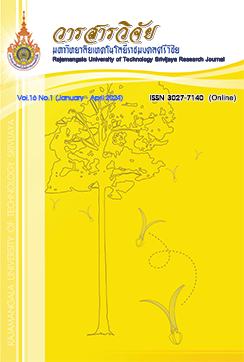Development of Bird Guarding Systems with Image Processing Techniques and High-Frequency Waves
Keywords:
bird guarding systems, Image processing, high-frequencyAbstract
Raising Red Tilapia in cages is often accompanied by birds eating fish during the first culturing period. Guarding against bird infestation has increased the number of red tilapia. Anti-bird detectors currently use infrared detection to detect them. It cannot be separated from other living things, like birds, and therefore it is not suitable for guarding bird infestations in cages or on the ground. Therefore, the research team had an idea to develop bird guarding systems with image processing techniques and high-frequency waves by bringing in image processing principles to help distinguish between terrestrial beings that are birds or not. If a bird-like object was found to be greater than or equal to 50%, the system will send the status to the ESP8266 board and then perform a high-frequency repulsion by randomly selecting three types of frightening sounds, namely an eagle barking, a dog barking, and the sound of firecrackers. The research method is divided into four steps: planning, analysis, design, and implementation. The results demonstrated that the YOLOv6-s algorithm achieved an accuracy of 0.084. In terms of processing speed, it operated at 0.1 frames per second, and the F1-Score was determined to be 0.082. High-frequency sound can guard birds against a distance of 5 to 10 meters.
References
Chaipakdee, M. and Chaipakdee, W. 2009. Guidelines for preventing infestation from pigeons. Wildlife Research Group Office of Wildlife Conservation, Department of National Parks wild animals and plants, Bangkok. (in Thai)
Dennis, A., Wizom, B.H. and Roth, R.M. 2012. System Analysis and Design. 5thed. John Wiley & Sons, Inc., USA.
Fisheries in Phitsanulok Province. 2020. Aquaculture information Phitsanulok Province, year 2020. Interview, February 25, 2021. (in Thai)
Fisheries Statistics Group. 2020. Estimated production and value of aquatic animals from Thailand's fisheries. 2021 – 2023.
Department of Fisheries. Available Source: https://www4.fisheries.go.th/local/file_document/20210705093649_1_file.pdf, March 10, 2020. (in Thai)
Hadkhuntod. 2022. The study of risk factors affecting the culture of Tilapia in the Nan River basin in Phitsanulok Province. Interview, December 20, 2021. (in Thai)
Jantarakanyabun, C. and U-aroon, P. 2016. Electronics Device Controller System with Sensor through MQTT Protocol Under Concept of Internet of Things (IoT), pp. 624-625. In National Academic Conference, Kasetsart University, Kamphaeng Saen Campus. Kamphaeng Saen, Nakhon Pathom. (in Thai)
Li, C., Li, L., Jiang, H., Weng, K., Geng, Y., Li, L., Ke, Z., Li, Q., Cheng, M., Nie, W., Li, Y., Zhang, B., Liang, Y., Zhou, L., Xu, X., Chu, X., Wei, X. and Wei. X. 2022. YOLOv6: A Single-Stage Object Detection Framework for Industrial Applications. Conell University. Available Source: https://arxiv.org/pdf/2209.02976.pdf, March 27, 2023.
Redmon, J., Divvala, S., Girshick, R. and Farhadi, A. 2016. You Only Look Once: Unified, Real-Time Object Detection. Conell University. Available Source: https://arxiv. org/abs/1506.02640v1, March 27, 2023.
Rodmorn, C., Panmuang, M. and Jonglakha, W. 2021. Application with the Wireless Sensor Network in Smart Farm. RMUTSV Research Journal 13(2): 315-329. (in Thai)
Downloads
Published
How to Cite
Issue
Section
License
Copyright (c) 2024 Rajamangala University of Technology Srivijaya Research Journal

This work is licensed under a Creative Commons Attribution-NonCommercial-NoDerivatives 4.0 International License.
The content and information in the article published in Journal of Rajamangala University of Technology Srivijaya It is the opinion and responsibility of the author of the article. The editorial journals do not need to agree. Or share any responsibility.







